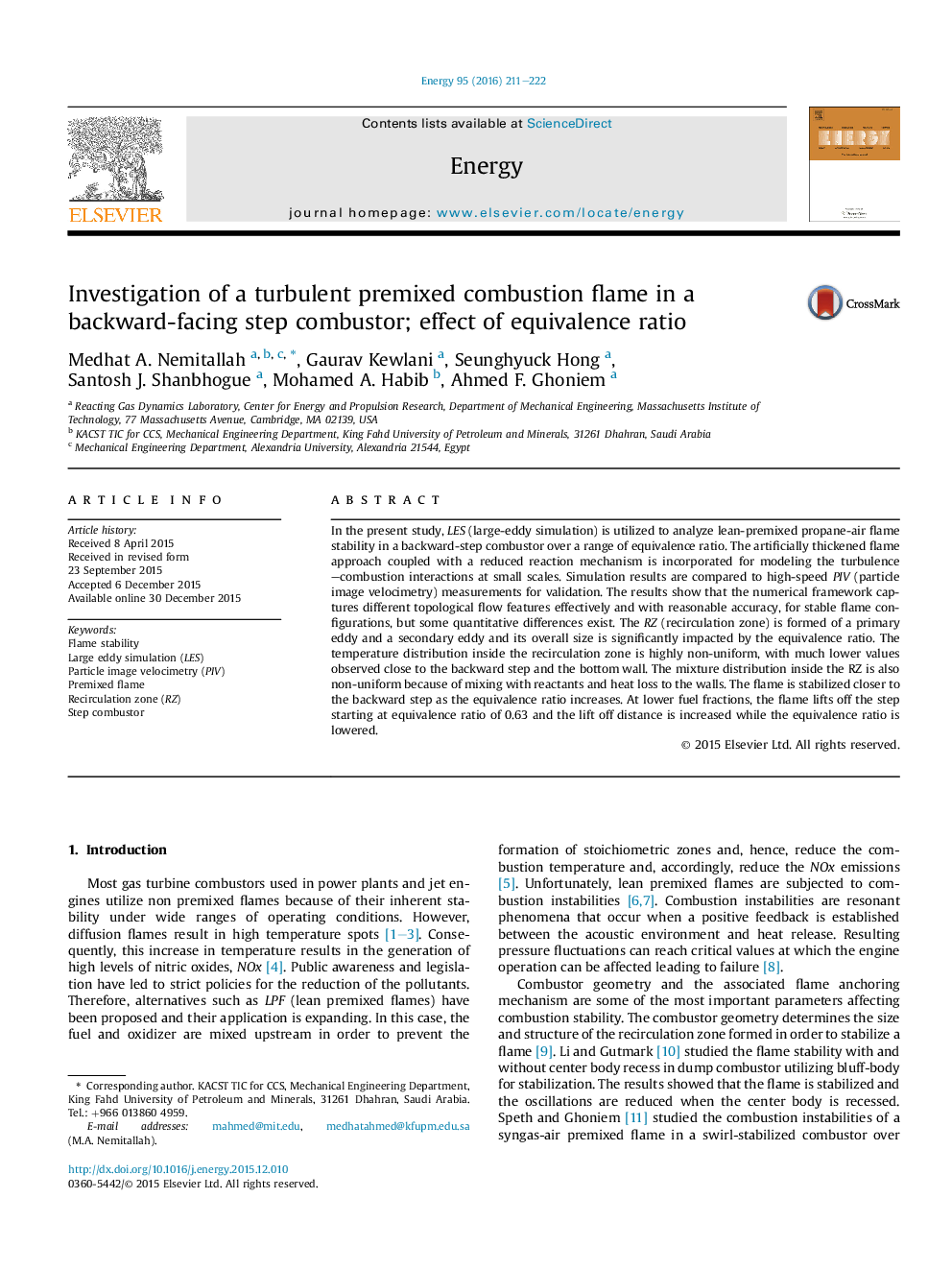| Article ID | Journal | Published Year | Pages | File Type |
|---|---|---|---|---|
| 1731427 | Energy | 2016 | 12 Pages |
•Experimental and CFD analysis of propane-air premixed flame in a step-combustor.•LES coupled with ATF approach is utilized in flame analysis over wide range of ΦΦ.•The RZ is formed of PE and SE, and its overall size is impacted by the equivalence ratio.•Flame is lifted-off at ΦΦ = 0.63 and it is completely extinguished at ΦΦ = 0.45.•The results showed the ability of the LES to capture turbulent-reactive flow features.
In the present study, LES (large-eddy simulation) is utilized to analyze lean-premixed propane-air flame stability in a backward-step combustor over a range of equivalence ratio. The artificially thickened flame approach coupled with a reduced reaction mechanism is incorporated for modeling the turbulence–combustion interactions at small scales. Simulation results are compared to high-speed PIV (particle image velocimetry) measurements for validation. The results show that the numerical framework captures different topological flow features effectively and with reasonable accuracy, for stable flame configurations, but some quantitative differences exist. The RZ (recirculation zone) is formed of a primary eddy and a secondary eddy and its overall size is significantly impacted by the equivalence ratio. The temperature distribution inside the recirculation zone is highly non-uniform, with much lower values observed close to the backward step and the bottom wall. The mixture distribution inside the RZ is also non-uniform because of mixing with reactants and heat loss to the walls. The flame is stabilized closer to the backward step as the equivalence ratio increases. At lower fuel fractions, the flame lifts off the step starting at equivalence ratio of 0.63 and the lift off distance is increased while the equivalence ratio is lowered.
